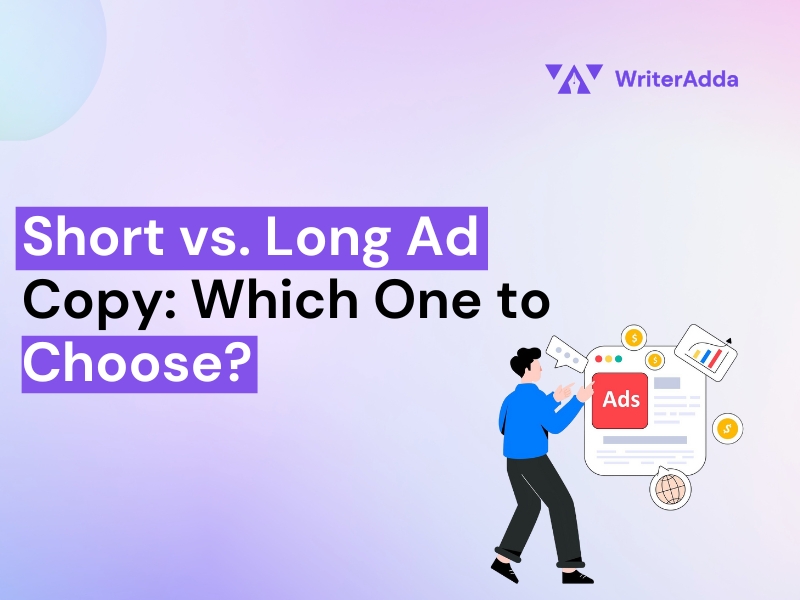In today’s digital era, your website homepage serves as the virtual front door to your business or shop. It’s the first impression of your business that visitors to your website experience, and it plays a pivotal role in capturing their attention and encouraging further exploration. Creating compelling content for your website homepage is essential to engage your audience, communicate your brand’s value proposition, and drive conversions. In this article, we will provide you with a step-by-step guide to help you write the perfect content for your website homepage.
Headline
 Headlines are one of the most crucial aspects of your homepage, as your homepage headlines should be attention-grabbing. They serve as the gateway to capture the attention of your visitors and entices them to explore further. A compelling headline instantly communicates your website’s value proposition and unique selling points, providing a clear and unique message that resonates with your target audience. It sets the tone for the rest of the content and acts as a hook, drawing users in and encouraging them to delve deeper into your website. A well-crafted headline not only grabs attention but also establishes credibility, builds trust and showcases the relevance and benefits of your offerings. It is visitors’ first impression of your brand, and a captivating headline can significantly impact user engagement, conversion rates, and overall website success.
Headlines are one of the most crucial aspects of your homepage, as your homepage headlines should be attention-grabbing. They serve as the gateway to capture the attention of your visitors and entices them to explore further. A compelling headline instantly communicates your website’s value proposition and unique selling points, providing a clear and unique message that resonates with your target audience. It sets the tone for the rest of the content and acts as a hook, drawing users in and encouraging them to delve deeper into your website. A well-crafted headline not only grabs attention but also establishes credibility, builds trust and showcases the relevance and benefits of your offerings. It is visitors’ first impression of your brand, and a captivating headline can significantly impact user engagement, conversion rates, and overall website success.
Navigation
Providing navigation for your website homepage is crucial for several reasons. Firstly, it helps users quickly and easily find the information they seek. Without navigation, users might have to spend a lot of time scrolling through your website or clicking on random links to find what they need. This can be frustrating and lead to a negative user experience, causing users to leave your website prematurely. Providing navigation helps you save precious time of your visitors. As a result, by providing navigation, you can save your website from low engagement and conversion rates.
Secondly, website navigation is important for search engines. Search engines use web crawlers to index websites, and they rely on navigation links to determine the structure and hierarchy of a website. Providing clear and concise navigation makes it easier for search engines to index the content by understanding the relevance of each page, which in turn can improve search engine rankings for your website
Thirdly, website navigation can impact your website’s branding and visual identity. By providing a consistent and easy-to-use navigation menu, you can create a sense of familiarity and comfort for users. Additionally, navigation is essential for website accessibility, particularly for users with disabilities such as visual impairments. These accessible navigation options will ensure easy access for visitors to the informative content on your website.
Overview of product or services
 People are coming to your website searching for some products or services you offer. As a result, providing an overview of services or products on your website homepage is paramount as it serves as a virtual storefront for your business. This initial impression can make or break a visitor’s decision to explore further or navigate away. By clearly presenting an overview of what you offer, you provide visitors with a quick understanding of the value your business provides. This concise and easily accessible information helps potential customers assess whether your products or services align with their needs, saving them time and effort. Moreover, an overview allows you to highlight key features, unique selling points, and any special promotions, enticing visitors to delve deeper into your website and ultimately convert into loyal customers. A well-crafted overview instills trust, establishes credibility, and showcases the breadth of your offerings, leaving a lasting positive impression on visitors.
People are coming to your website searching for some products or services you offer. As a result, providing an overview of services or products on your website homepage is paramount as it serves as a virtual storefront for your business. This initial impression can make or break a visitor’s decision to explore further or navigate away. By clearly presenting an overview of what you offer, you provide visitors with a quick understanding of the value your business provides. This concise and easily accessible information helps potential customers assess whether your products or services align with their needs, saving them time and effort. Moreover, an overview allows you to highlight key features, unique selling points, and any special promotions, enticing visitors to delve deeper into your website and ultimately convert into loyal customers. A well-crafted overview instills trust, establishes credibility, and showcases the breadth of your offerings, leaving a lasting positive impression on visitors.
In this situation, you can write short descriptions or simple visual representations of your services or products. These will help people understand within a minute and leave a good impression of your website on your visitor.
Feature of product or services
 Providing service or product features on your website homepage is crucial for several reasons. Here are some of the reasons why they must be included without fail:
Providing service or product features on your website homepage is crucial for several reasons. Here are some of the reasons why they must be included without fail:
• Capturing Attention: Your website homepage is often visitors’ first point of contact. By prominently displaying the features of your service or product, you can quickly capture their attention and entice them to explore further. Features highlight the unique value of your services to the customers in an understandable manner.
• Communicating Value Proposition: Clearly showcasing the features of your service or product helps communicate its unique value proposition. Visitors should be made aware of the features that set your services apart from competition and why they deserve their consideration. By highlighting the key features, you can effectively convey the benefits and advantages your product or service brings to the table.
• Addressing User Needs: Features can address the challenges and requirements of your target audience. When visitors land on your website, they often seek solutions to their problems. By highlighting relevant features, you demonstrate how your offering can fulfill those needs, making visitors more likely to engage further with your business.
• Enhancing User Experience: Clearly presenting the features of your service or product helps users understand what to expect and how your offering can meet their requirements. A well-designed homepage with easily accessible and understandable features can enhance user experience, resulting in increased engagement and conversions.
• Differentiation and Competitive Advantage: In today’s competitive landscape, it’s important to differentiate yourself the competition. You can highlight what makes your offering one of a kind, by prominently displaying unique features.
• Increasing Conversions: The ultimate goal of your website is to turn your visitors into loyal customers. Clearly, showcasing the features of your service or product plays a significant role in achieving this. When visitors can easily understand the value and benefits of what you offer, they are more likely to proceed with a purchase, sign up for a trial, or take any desired action.
• SEO and Search Visibility: Including features on your homepage can also boost your website’s search engine optimization (SEO) efforts. Search engines can index and rank your website more effectively when you provide detailed descriptions and keywords related to your features. This can increase organic traffic and visibility, as users searching for relevant keywords are more likely to find your site.
Social Proof
 Providing social proof for your website homepage is incredibly important for several reasons. Firstly, social proof provides prospective customers with the necessary encouragement to take the intended action on your website. When visitors witness that a large community has used and liked your product or service, they are more likely to trust your brand and feel confident in purchasing your products or availing your services. You can establish trust and credibility with your potential customers by highlighting positive reviews, testimonials, and endorsements from previous customers and industry experts. These can be key for businesses that are relatively unknown or new to the market. Social proof can also help differentiate your business from competitors and show potential customers why they should choose your products or services.
Providing social proof for your website homepage is incredibly important for several reasons. Firstly, social proof provides prospective customers with the necessary encouragement to take the intended action on your website. When visitors witness that a large community has used and liked your product or service, they are more likely to trust your brand and feel confident in purchasing your products or availing your services. You can establish trust and credibility with your potential customers by highlighting positive reviews, testimonials, and endorsements from previous customers and industry experts. These can be key for businesses that are relatively unknown or new to the market. Social proof can also help differentiate your business from competitors and show potential customers why they should choose your products or services.
Social proof can also help build brand loyalty and increase customer retention. When you show that others have had positive experiences with your business, you can foster a sense of community and trust among your customers. Finally, social proof can also impact your website’s search engine rankings. Positive reviews and testimonials can help to improve your online reputation and increase the visibility of your website in search engine results. Overall, providing social proof on your website homepage can go a long way in establishing trust, building brand loyalty, and driving conversion rates.
Call-To-Action
 The significance of incorporating a Call-To-Action (CTA) on your website homepage cannot be overstated. The homepage serves as the digital gateway to your online presence, and an effective CTA acts as a compelling invitation to visitors, guiding them towards taking desired actions and engaging further with your business. By strategically placing CTAs, you provide clear directions and motivate users to explore your website, interact with your content, and ultimately convert into valuable customers or clients.
The significance of incorporating a Call-To-Action (CTA) on your website homepage cannot be overstated. The homepage serves as the digital gateway to your online presence, and an effective CTA acts as a compelling invitation to visitors, guiding them towards taking desired actions and engaging further with your business. By strategically placing CTAs, you provide clear directions and motivate users to explore your website, interact with your content, and ultimately convert into valuable customers or clients.
Firstly, CTAs are powerful navigational tools, directing visitors to specific pages or sections that align with their interests or needs. They enable you to highlight key offerings, promotions, or featured products/services, guiding users towards the next step in their customer journey. By presenting a clear and enticing CTA, such as “Shop Now,” “Learn More,” or “Get Started,” you create a sense of urgency and encourage visitors to delve deeper into your website’s offerings.
Secondly, a well-crafted CTA on the homepage can significantly enhance lead generation and conversion rates. By placing a prominent CTA in a visually appealing and easily accessible location, you capture the attention of potential customers and motivate them to take action. Whether it’s signing up for a newsletter, downloading a free resource, requesting a quote, or initiating a purchase, a compelling CTA entices visitors to share their contact information or commit to a desired action, helping you build a valuable database of leads.
Moreover, CTAs on the homepage contribute to the overall user experience and satisfaction. Visitors typically appreciate clear and intuitive navigation, and a strategically placed CTA can simplify their journey by providing concise directions. This reduces frustration and increases the likelihood of users exploring more of your website, boosting engagement and potentially leading to longer visit durations, repeat visits, and increased brand loyalty.
By ensuring that your homepage offers a seamless user experience, highlighting the value you provide, and presenting a visually appealing and professional design, visitors are more likely to perceive your business as reliable and trustworthy. A persuasive CTA adds an extra layer of assurance, indicating that you are confident in your offerings and encouraging users to take action with confidence.
Conclusion
The website homepage must never be an afterthought; it should have the utmost attention and investment. The content of your website homepage has a dominant hold on the success of your overall website. Therefore, it is imperative to prioritize and allocate the necessary effort to create an award-winning homepage that seamlessly combines stunning design with compelling copy.
Frequently Asked Questions
Q: Why is it important to have the perfect content on a website homepage?
A website homepage is the first point of contact for visitors and can create a lasting impression about the brand or business. The content on the homepage should be clear, concise and compelling, helping to engage visitors and communicate the business’s value proposition.
Q. What elements should be included in the perfect content for a website homepage?
The perfect content for a website homepage should include a clear and concise headline, a captivating tagline, an introduction that speaks directly to the target audience, high-quality images, social proof such as customer reviews or testimonials, and a clear call to action.
Q: How do I determine my target audience for the website homepage content?
To create content that is easy to read and understand, use short sentences and paragraphs, avoid jargon, and use simple language. Use headings and subheading to break up the content into digestible chunks.
Q: What should I avoid while writing website homepage content?
Avoid using passive voice, complex language, and long sentences. You need to steer clear of using generic phrases or cliches. Also, avoid exaggerating or making false claims in the content of your webpage.




